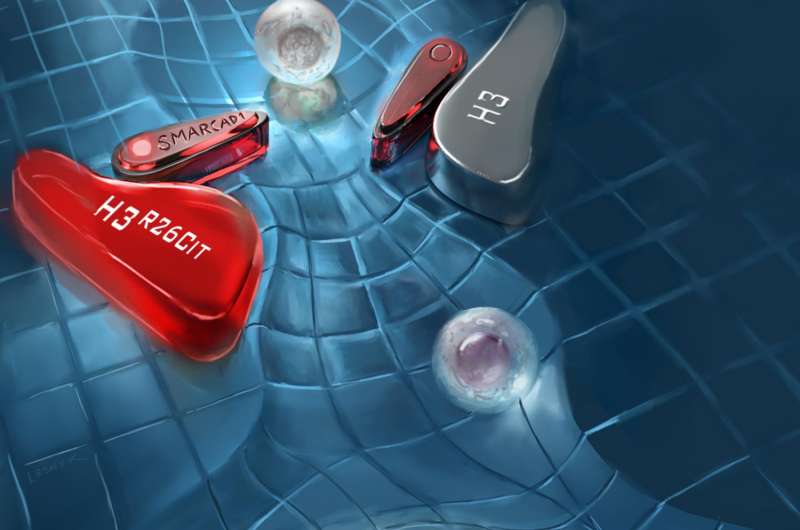Discovery of a new regulatory protein provides new tool for stem cell engineering

Bioengineers at the University of California San Diego have discovered a protein that regulates the switch of embryonic stem cells from the least developed "naïve" state to the more developed "primed" state. This discovery sheds light on stem cell development at a molecular level.
The findings were published online in Cell Reports on March 28.
"This discovery provides a fine-tuning knob for the stem cell engineering toolkit," said Sheng Zhong, a bioengineering professor at the UC San Diego Jacobs School of Engineering and the study's senior author. "A number of previously identified regulatory proteins can be considered as rough-tuning knobs that result in greater changes in cellular behavior. We need both tools to precisely set stem cells into the desired cellular state so that they can carry out the functions that we desire."
The researchers discovered that the protein, called SMARCAD1, interacts with a specific type of histone modification, called histone citrullination (H3R26Cit), to prevent the spontaneous switch from the naïve to the primed pluripotent state. By suppressing SMARCAD1 from interacting with H3R26Cit, researchers were able to induce this switch. They also found that the stem cells with suppressed SMARCAD1 expression remained pluripotent. "This finding offers an approach to fine tune the stem cells between two cellular states corresponding to two early developmental stages," said Jia Lu, a bioinformatics Ph.D. student in Zhong's research group who co-authored this work.
Zhong and his team first used protein arrays composed of hundreds of histone peptides harboring distinct post-transcriptional modifications, and found that SMARCAD1 specifically interacts with the H3R26Cit modification. They then used a technology called ChIP-seq to assay genome-wide distributions of SMARCAD1 binding as well different kinds of histone modifications, and found that SMARCAD1 specifically binds to H3R26Cit modified histones in the entire genome.
Researchers also conducted experiments in which they suppressed the expression of SMARCAD1, and a separate set of experiments in which they suppressed a more general form of H3R26Cit called H3Cit. In both experiments, they observed cellular changes consistent with the switch from the naïve to the primed stem cell state, providing more evidence of SMARCAD1's regulatory role in stem cell development.
Moving forward, the team is investigating whether SMARCAD1 also plays a role in regulating the behavior or cancer cells.
More information: Cell Reports, DOI: 10.1016/j.celrep.2017.02.070
Journal information: Cell Reports
Provided by University of California - San Diego




















